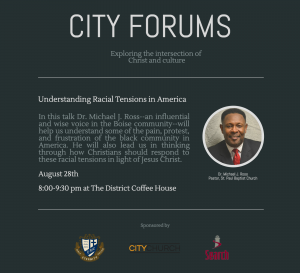As stated in my previous blog, there are many things I appreciated about Ken Wilson’s book, A Letter to My Congregation. I need to say this up front because this blog is going to be pretty critical. I’m going to focus on and  evaluate Ken’s use of Scripture in chapter 3 of his book. And to be completely honest, I felt that it was by far the weakest part of the book and yet, perhaps, the most important part as well.
evaluate Ken’s use of Scripture in chapter 3 of his book. And to be completely honest, I felt that it was by far the weakest part of the book and yet, perhaps, the most important part as well.
But let me start off on a positive note. Ken rightly points out some sloppy and misleading approaches to Scripture by non-affirming evangelical scholars. For instance, he cites Grant Osborne’s summary of homosexuality in the Old Testament in his Romans commentary:
The Old Testament contains many condemnations of homosexual practices (Genesis 19:5, 8; Leviticus 18:22 and 20:13; Deuteronomy 23:17-18; Judges 19:22-24; 1 Kings 14:24 and 15:12; 2 Kings 23:7; Isaiah 1:9 and 3:9: Lamentations 4:6) (Osborne, Romans, 57).
Ken Wilson points out that “In the same section, Osborne asserts that Scripture condemns all same-sex activity” (pg. 77).
A few years ago, I developed a habit of looking up the actual Scripture references when they occur in a long string like Osborne’s. And in almost every instance, I find some—and sometimes many—references that have nothing to do with the stated claim. It sure looks good; it feels biblical; it makes it seem like the Bible is speaking for itself. But oftentimes such string of references is nothing more than inaccurate proof texts.
This is the case with Osborne’s statements. Genesis 19 is about attempted gang rape, Deuteronomy 23 and 1 Kings might be about prostitution (or at least cultic service), Judges 19 is about gang rape, and Isaiah 1, 3 and Lamentations 4 is about the “sin of Sodom” but there’s no mention of same-sex behavior. I can’t tell you how annoying this is. To see a credible evangelical scholar make a broad brush statement about such an important issue and use the Bible haphazardly (and inaccurately and misleadingly) to support his claim. For those who believe that the Bible is God’s inspired word, we need to do better.
Unfortunately, I don’t think Ken does much better. Ken looks at the main prohibition texts (Lev 18, 20; Rom 1; 1 Cor 6; 1 Tim 1) and tries to show that they are not all that clear. He concludes that “there are real problems in applying the prohibitions of Leviticus 18, 20; Romans 1; 1 Corinthians 6; and 1 Timothy 1 to people in modern monogamous gay unions” (p. 76). But Ken’s evidence is selective, his synthesis misleading, and some of his statements are downright inaccurate. Again, I don’t want to question Ken’s heart. I don’t question his love for Jesus. And I still want Ken at my bedside if I contract a terminal disease. But I really hope he rewrites this chapter in his second edition.
Ken, if you’re reading this, here are some suggestions. I know you’re a pastor and don’t claim to be a scholar. But you are a brilliant thinker and according to your footnotes you’ve read a ton of scholarly books and articles on this topic. I know you’re capable of more precision.
First, your conclusion that Leviticus 18 and 20 is probably talking about temple prostitution is held by hardly any credible scholar these days (see for instance, Stephanie Budin’s book, The Myth of Sacred Prostitution in Antiquity), and you never considered the actual language of the text that speaks of mutuality and doesn’t give any indication that some specific form of same-sex relations is in view.
Second, you argued that the main forms of same-sex relations in the Greco-Roman world were temple prostitution, pederasty, and sex with slaves. This is actually correct. According to the literature (more on that below), these were the main forms. But then you said that you could only find two examples of relationships analogous to contemporary, consensual, monogamous gay relations: Nero’s marriage to his slave and that funky tale in Plato’s Symposium. As you rightly point out, these are terrible examples! Nero castrated his slave and married him because the slave reminded Nero of his late wife. Yikes! I’m with you, this is a terrible parallel.
But there are many others more legitimate examples that you never mentioned, some of which have been documented in the same books you cite in your footnotes.
I’ll save you a long list, but just a few examples. In the Greek period, we see examples of pederastic relations that grew into life-long partners. Okay, but they began as pederasty. But we also see examples of consensual same-sex relations among (not just towards) teenagers in Greece, and other relations between similar age adults.
Consensual and loving same-sex relationships can be seen during the Roman period as well. For instance, Xenophon’s second-century AD novel An Ephesian Tale depicts a young man named Hippothous who falls in love with another man of the same age named Hyperanthes. Hippothous says “our first steps in lovemaking were kisses and caresses, while I shed floods of tears … we were both the same age, and no one was suspicious. For a long time we were together, passionately in love.” Another novel by Achilles Tatius written around the same time depicts male lovers who are roughly the same age. Both of these are novels and not histories, but novels only make sense if they mirror the real world. Likewise, the first century Roman author, Petronius, wrote a book called the Satyricon, which discusses homosexuality at great length. In it, the author portrays two male lovers, Encolpius and Ascyltos, who are equal in age and status. Strikingly, the author doesn’t make a big stink about their relationship—as if it’s some weird, crazy, abnormal thing. It appears that their consensual, non-exploitative, mutual love-relationship may have been more common than some scholars think.
Consensual, same-sex love—even marriages—can be found among women around the time of Paul. A second-century writer named Iamblichos talks about the marriage between two women named Berenike and Mesopotamia. Lucian of Samosata also mentions the marriage of two wealthy women named Megilla and Demonassa. The early Christian theologian Clement of Alexandria refers to women-women marriage. And Ptolemy of Alexandria, a famous second-century scholar of many trades, refers to women taking other women as “lawful wives.” Two Jewish documents that were written shortly after the New Testament refer to (and forbid) female marriages that were happening in their day. Several archaeological discoveries depict mutual love between women, including a funeral relief that dates back to the time of Caesar Augustus, where two women are holding hands in a way that resembles “the classic gesture of ancient Roman married couples” (Brooten, 59-60).
I could keep going on (my book talks about this in more detail), but it just feels like you did quite a bit of homework in digging up examples of pederasty, slave-sex, and prostitution but you didn’t put the same time and energy in digging up examples of other, more consensual, same-sex relations.
Third, with your (incomplete) historical background in place, you re-read Romans 1 through the lens of the question: “Is the text [Rom 1] a sweeping condemnation of all same-sex practice or does it speak to the predominant practice of the time, especially temple prostitution and pederasty?” (p. 64). Again: “How would we modern readers understand Paul’s condemnation of same-sex practice if widespread and widely accepted institutions like temple prostitution, pederasty, and slavery had shape our view of it?” (p. 65-66). These are good questions. But asking them in light of your historical background nudges the read to give a jaded answer. Plus, you neglected one important feature that’s necessary for interpretation: the text.
In other words, I didn’t find any compelling argument from the actual text of Romans 1 that supports the interpretation you highlight (or support? Perhaps strongly lean toward?). Romans 1 prohibits same-sex females relations (1:26) and parallels these with same-sex male relations (1:27), and female relations were not characterized by pederasty, sex with slaves (for the most part, though Martial has some pretty graphic and filthy satirical comments to the contrary), or cultic prostitution. Plus, Paul uses language of mutuality throughout Romans 1:26-27 that doesn’t at all fit the historical background you’re reading the text through. It’s totally fine if you can refute (with evidence) these and other points. But at least do your reader the service of mentioning them.
All and all, this chapter just felt like you went out of your way to say that we just don’t really know what these passages are saying, but the evidence you used to support such ambiguity was misleading, selective, and incomplete.
But this is the most important chapter, I believe, in your book. Chapters 4 and 5, where you articulate the possibility of “the third way,” only work, to my mind, if the Bible really isn’t that clear on same-sex relations.
One more quick thought about using Greco-Roman literature to re-construct (and often re-interpret) the New Testament. We must be very careful in using such literature to give us a real picture of “life on the ground” in the first-century. A vast portion of this literature was written by wealthy, elite, educated, literature, high-class men, who had their heads so far up their ivory tower that they could never see what real life was like for the rest of humanity. They constitute 5%, maybe 10%, of the population. In other words, the literature gives us a very slanted picture (sometimes a very inaccurate picture) of the views and practices of the other 90%—the rest of the (largely illiterate) society trying to squeak out a living. We have hardly any texts written by women, for instance. And the stuff we do have actually show that mutual, consensual same-sex relations were more popular than the elite males would care to admit (see for example the poetry of Sappho).
But Paul was writing to the 90%. There are only a few examples of such elites in the early church (see 1 Cor 1). In fact, Paul’s letters are actually some of the best examples we have of a perspective of life on the ground, the 90%. We should not just read Paul against the background of Greco-Roman literature. Rather, we should read him as Greco-Roman literature.















